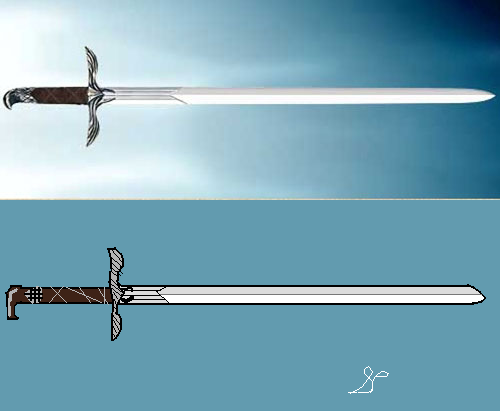Guy
 Inkling
Inkling
Coincidentally, I'm writing a story in which some characters have to take on a T.rex-type critter, though I was using a small army rather than two people. But what I had mine do was go for the animal's hamstrings. For your story, what could theoretically work would be for your swordsman to use a cutlass, a good cutting sword widely used by sailors, privateers, pirates, etc. and go for the hamstrings while the sorceress does whatever it is you're going to have her do. While cutting the hamstrings won't kill the thing, it would immobilize it, making it easy to outrun if you can't kill it.

 Auror
Auror
 Sage
Sage

